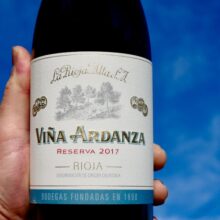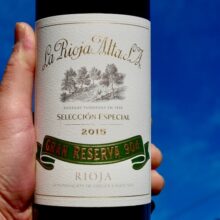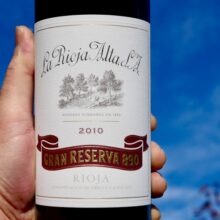
Winery
La Rioja Alta
About La Rioja Alta
At this time, French vineyards were ravaged by phylloxera, and connoisseurs were having to look elsewhere for supplies of fine wine. Rioja, with its excellent climate and soils, had already attracted attention, and experiments with Bordeaux-style vinification and barrique-aging were proving very successful. The region’s only real disadvantage was its remoteness, cut off from the lucrative markets to the north by the same mountains that ensured its favorable climate. This problem was solved by construction of the rail link to Bilbao, and it is no coincidence that Bodegas La Rioja Alta was established next to the Haro railway station in the same year it opened.
In 1904, La Rioja Alta absorbed Bodegas Ardanza, and gained access to some of the finest vineyards in the Rioja Alta district. The luxury 904 bottling commemorates this important milestone in the company’s development. Since then Rioja has seen more bad times than good, and many producers have harmed the reputation of the region and its production methods, releasing sloppily-aged wines which were never good enough to support a long time in cask. But La Rioja Alta has never let standards slip, and continues to this day the tradition of careful long-aging that gives Rioja its unique character. These wines offer a wonderfully complex bouquet, rich flavors, a seductively smooth texture, and are all ready to drink on release.
In the Vineyard
The company owns 300 hectares of vineyards in different parts of the best zones of the Rioja Alta region. La Rioja Alta S.A. is specialized in red wines. The leading grape variety is the Tempranillo with small doses of Mazuelo and Graciano. The Vina Ardanza differs from the other wines with some 25% Garnacha in the blend.
Sustainability in the Vineyard
Our 900 hectares are cultivated with integrated production methods, minimizing chemical use through natural alternatives like insect shelters, biotechnological traps, and ground cover. We plant vineyards at elevations above 800 meters to adapt to climate change, preserving the freshness and acidity essential to our wines.
Organic viticulture is a priority, with free-roaming horses and cows fostering biodiversity, while bat colonies provide natural pest control. Additionally, our “Artisanal Vineyards” project focuses on reviving century-old vines, safeguarding the heritage of Rioja Alta.
The people from La Rioja Alta are looking for older vineyards in the Rioja Alta zone, mostly around Elvillar, in principle for the sister project Torre de Oña. As they think they have done all the technical improvements possible, they believe the improvement has to come from the vineyards, so they are experimenting in that direction. In those vineyards, there is more white interplanted with the red. And they are also experimenting with white wine.
In the Winery
In short the wines are made in the traditional Rioja manner. The company is adamant about not using French oak, keeping the unique Rioja style which has been developed since the end of the 19th century. In spite of the varying amount of time in cask and bottle the wines all display a wonderful rich ruby color, gorgeous aromas of oak, spices and fruit followed by a sensational feel on the palate, with a wonderful smooth texture, clean rich oaky/fruity flavors and a long lingering finish. All the wines are ready for consumption on release but will keep for many more years in bottle. This situation is almost unique in the world of wine and is the reason why so many restaurants list La Rioja Alta’s outstanding range of truly classic Rioja wines.
Where in the World is La Rioja Alta?
La Rioja Alta is in Haro, Rioja Alta. Rioja and it’s three current subzones Alta, Alavesa and Baja achieve no meaningful distinction between vineyards and wines.
Baja translates to Low and is being replaced with Oriental given the negative quality conation of the word.
There is a growing push to better recognise quality terroir by define the:
Quality soils in Rioja at a macro level, equivalent to Appellation Bourgogne in Burgundy;
The individual villages or Pueblo of Rioja equivalent to a village in Burgundy like Gevrey-Chambertin or Chassagne-Montrachet; and
The special places (like lieu dit in Burgundy) & individual vineyards within the villages.
Only time will tell how this unfolds. In the meantime we’ll be including information on all of the wines we list from Rioja.
The area is vast with over 60,000Ha of vines planted. As Scott Wasley puts it, it’s the equivalent of using South East Australia to classify the wines NSW, Victora, SA and Tasmania. In the flyover below at the 20sec mark you’ll see a high level geological map of general soil types, it’s clear they run perpendicular to the general sub-region orientation along a number of rivers, valleys and sub-plains. The fact that I’ve mentioned both the split in soil types, and, significant geological changes if enough for any vigneron worth their salt to call for a more detailed differentiation between key viticultural areas of Rioja. Politics, corruption and a bias toward bland mass-produced wines the adversaries of progress on mapping the region. Without more appropriate classification of vineyards we have to rely on the reputation of quality producer and their track record in the glass. Perhaps not a bad thing for an individual wine. Not great for the reputation of a region as a whole.


